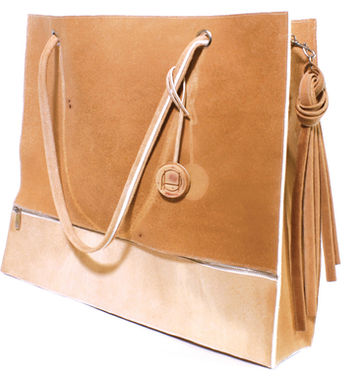
Maryam Goormaghtigh, ArteFr, 2017
Final Master's Project on the Material Futures Course, Central Saint Martins School of Art and Design.

Pure human:
exploring the commodification of human flesh as a new form of luxury
06 / 2016
The biotechnology industry has become firmly established over the past twenty years and biological patents have played an important part in this phenomenon. However, concerns regarding the patentability of human genetic materials have been raised through public protest and international statements.
The mentioned concern mainly focus on the lack of surveillance regarding the protection of biological information that allows big Bioengineering Corporation to obtain raw material from surgical patients without their consent. Those materials are later processed into products, copyrighted by the manufacturing company and sold worldwide.
As this new intersection between luxury and biology grows more sophisticated the question of how will advancements in tissue engineering technology redefine today’s concept of luxury becomes more prominent. The Pure Human project was conceived research methodology to better understand the development of this arising phenomenon. The critical project speculates on a possible future application of biotechnological processes within the luxury industry. The project also aims to address shortcomings that are present in our current legal system which is enabling ether an individual or organisation to claim ownership over biologically engineered products that are embedded with human genetic information.


Gyre Gallery Tokyo, 2018
Sanne Visser, 2016
The final outcome consists of a range of speculative commercial leather products cultivated from extracted human biological material. The products within the collection have been exposed to different surface manipulations. The surface alterations have been specifically selected to imitate three different modifications that human skin will undergo in the cycle of his lifetime. The purpose of this action was to expose the identity of the source and humanize beck the bodily materials usually depersonalized because of their scale.
Tattooed leather jackets mimic inked skin alteration techniques.
The tanned product emphasizes the fragility of human skin compared to other species. The epidermis contains far less natural protection against UV light than other living organisms, which could enable the cultivated not fully tanned material to get sunburnt.
The pigmented product exploits the ability of the TYR gene to promote the production of the pigment melanin. The stimulation of the gene’s performance can be achieved with biological agents. Depending on the amount of the applied agent the accumulated melanin can appear on a smaller (freckles) or larger (moles) scale.
In the context of the project, a patent application has been filed on the 20/05/2016. The intention of the patent is to expose the context behind the project by showcasing that is premises is also applicable to our current commercial market and the scenario is based on actual limitations of the legal system.



Tom Mannion, 2016









